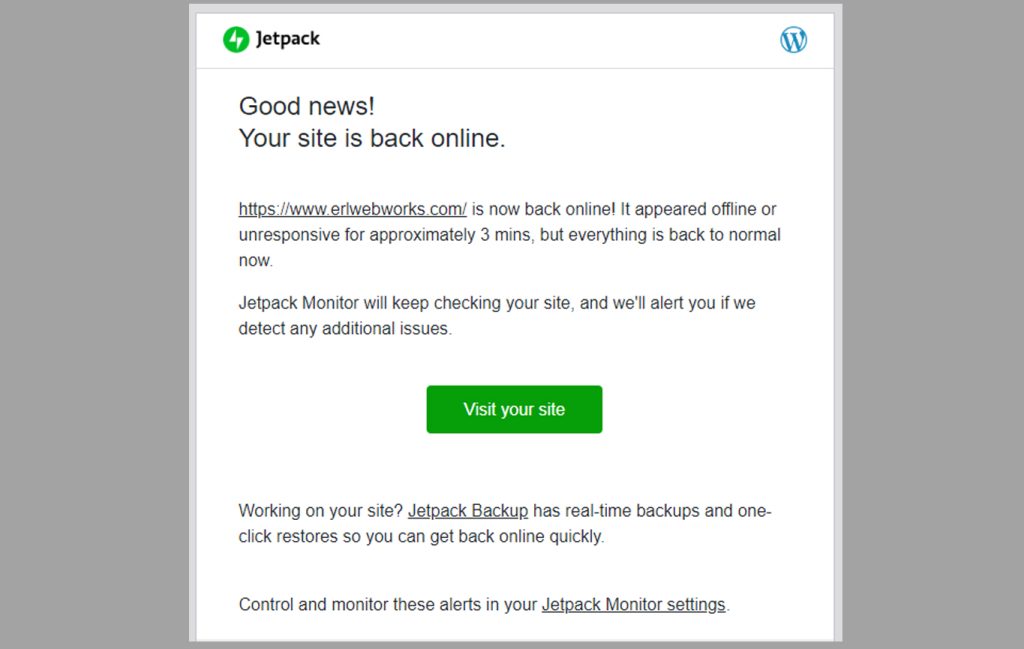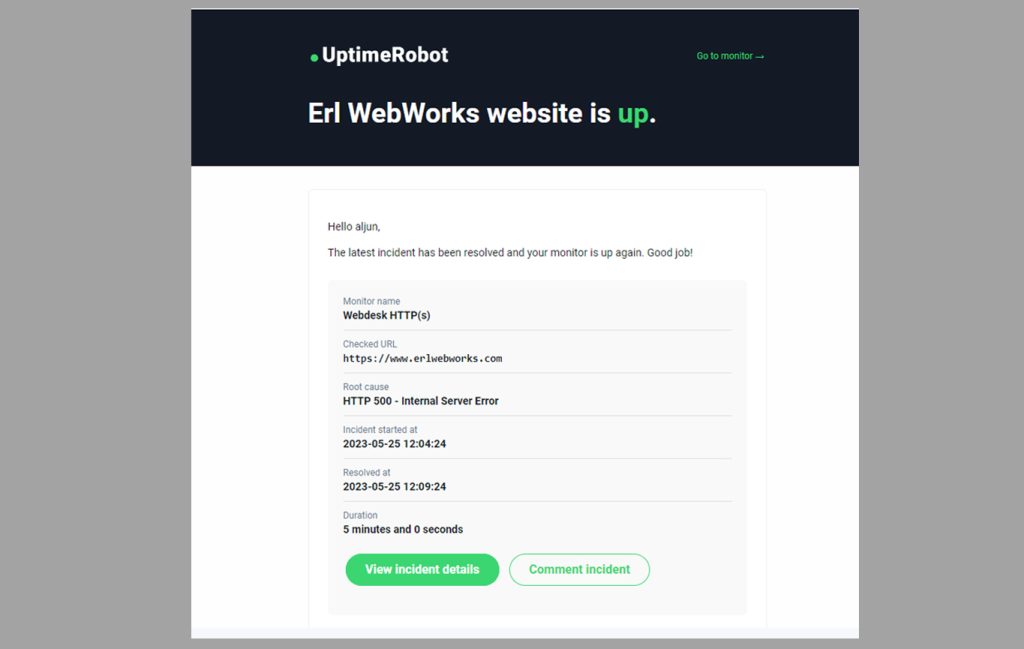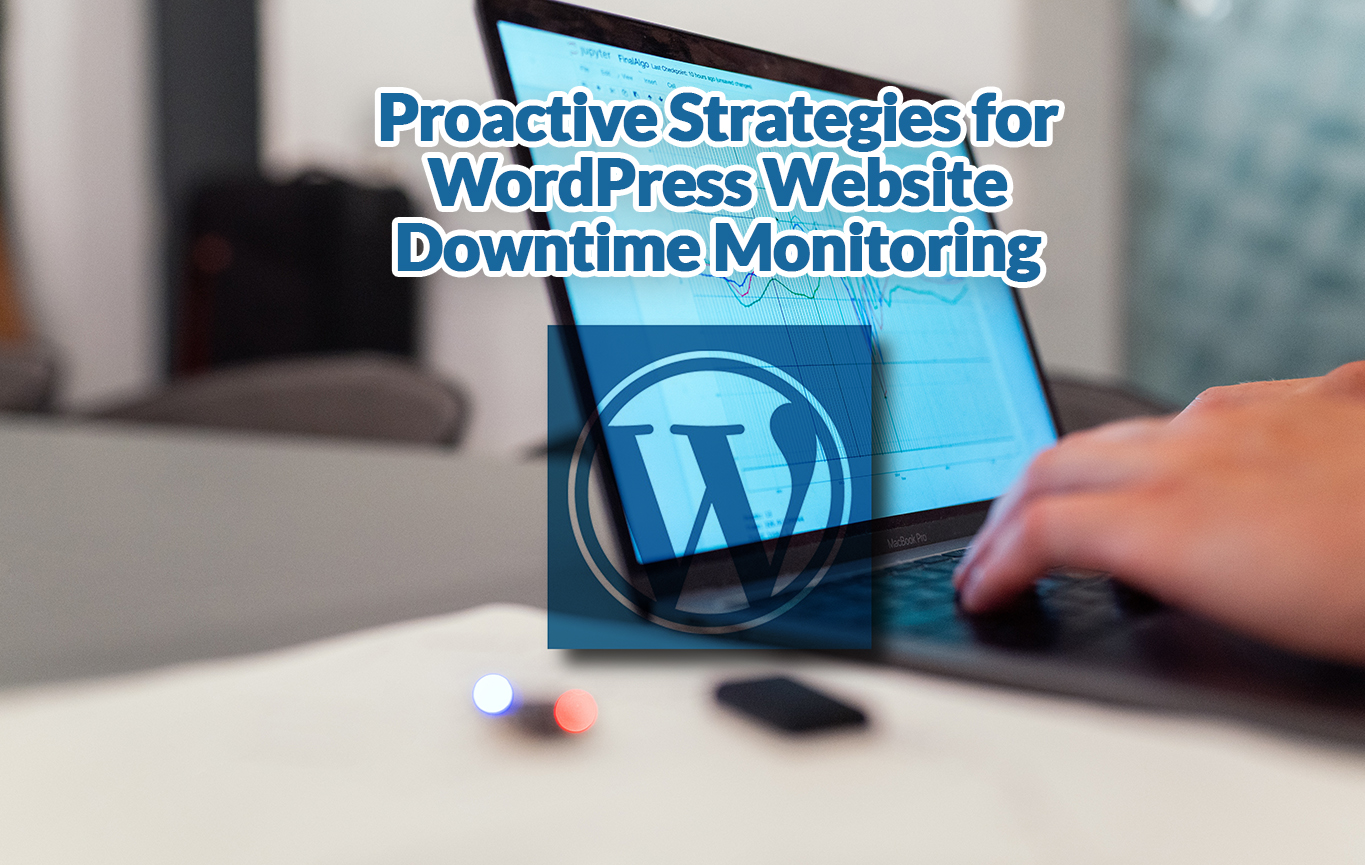The vitality of server uptime in the realm of WordPress websites cannot be overstated, as it serves as a linchpin for customer availability, user experience enhancement, and search engine ranking optimization. Consequently, monitoring server uptime emerges as a paramount task for website administrators to safeguard their online presence from the detrimental effects of downtime. This article delves into the significance of downtime monitoring and presents an array of tools and techniques designed to address this critical aspect. Furthermore, it sheds light on WordPress-specific monitoring solutions and provides insights into selecting a reliable hosting provider.
To maintain a sense of freedom in managing one’s virtual real estate, understanding the intricacies of downtime monitoring is essential for any modern-day digital entrepreneur or administrator. By examining various monitoring tools such as UptimeRobot, Pingdom, IsItWP alongside WordPress-centric solutions like Jetpack and UptimeRobot plugins, this article aims to empower its readers with knowledge that will help them make informed decisions about their websites’ management. Moreover, it offers guidance on steps to take when faced with website downtime and its impact on SEO performance while emphasizing the importance of utilizing dependable hosting servers to minimize potential disruptions.
Importance of Monitoring Downtime for Your WordPress Website
The significance of tracking server outages for online platforms cannot be overstated, as it directly impacts user experience, revenue generation, and search engine rankings. Frequent website downtime can lead to a loss of trust among users and potential customers, ultimately driving them away from the platform. Furthermore, when search engines detect that a site is often unavailable or inaccessible, they may penalize the website by lowering its position in search results. As such, monitoring server uptime plays a crucial role in maintaining the overall health and performance of a WordPress website.
A variety of factors can contribute to website downtime, including hardware failure, software issues, network problems, or even cyber-attacks. By identifying common causes of downtime and implementing best practices for uptime monitoring, website owners can proactively address these issues before they escalate into more significant problems. Monitoring tools not only help detect when a site goes down but can also provide valuable insights into patterns and trends that may indicate underlying issues requiring further investigation.
Server uptime monitoring offers numerous benefits to WordPress website owners beyond early detection of downtime incidents. Improved user experience due to minimal interruptions ensures customer satisfaction and encourages repeat visits. Additionally, consistent availability protects revenue streams by minimizing lost sales opportunities resulting from an inaccessible site. Moreover, maintaining good standing with search engines through regular server uptime contributes to higher search result rankings – enhancing the visibility and credibility of the platform.
A comprehensive approach to server outage prevention requires utilizing top tools designed specifically for monitoring WordPress downtime. By employing reliable and efficient services tailored to track server outages on WordPress websites effectively (including plugins like Jetpack or UptimeRobot), webmasters can stay ahead of potential disruptions while optimizing their site’s performance for an uninterrupted online presence. In the next section about ‘top tools for monitoring WordPress downtime,’ various solutions will be discussed in detail to aid decision-making processes regarding which tool best suits individual needs without compromising on quality or functionality requirements, ensuring a smooth and efficient website management experience.
Top Tools for Monitoring WordPress Downtime
Monitoring WordPress website uptime is crucial for ensuring the availability and performance of a site, which can be achieved using tools such as Jetpack and UptimeRobot. These tools offer comprehensive monitoring services that send alerts via email or SMS when a website experiences downtime, allowing website owners to take prompt action to resolve any issues. By utilizing these top tools, users can maintain the accessibility of their WordPress websites and minimize potential loss of revenue due to server downtime.
Monitoring WordPress Website Uptime Using Jetpack

Keeping a finger on the pulse of your site’s uptime can be efficiently accomplished using Jetpack, ensuring optimal performance and accessibility for visitors. Jetpack offers an array of features that make it an ideal choice for WordPress website downtime monitoring. When comparing UptimeRobot vs Jetpack, both have their advantages, but Jetpack is specifically designed for WordPress websites and seamlessly integrates with its platform. Some key benefits of proactive monitoring include:
- Free website monitoring: Jetpack’s basic plan offers free uptime monitoring services.
- This allows users to try out the service without any financial commitment.
- For those who require more advanced features, there are premium plans available.
- Reducing website downtime: Proactively monitor your site’s availability and take prompt action if an issue arises.
- Minimize customer dissatisfaction due to interrupted access to your site.
- Prevent potential revenue loss caused by prolonged downtime.
Jetpack provides website owners with valuable insights into their site’s performance while maintaining ease of use and integration specific to the WordPress ecosystem. By leveraging the capabilities offered by this tool, you can ensure a consistently positive experience for your users. As we continue exploring various methods of monitoring WordPress website uptime, let us now move forward to discuss another popular option – UptimeRobot – and how it compares in terms of functionality and effectiveness within the realm of keeping sites online.
Monitoring WordPress Website Uptime Using UptimeRobot

Utilizing UptimeRobot as a tool for maintaining optimal online presence provides an effective alternative to Jetpack, with its own unique features and advantages tailored to various user needs. One of the key benefits of using UptimeRobot is the ability to monitor multiple websites simultaneously, making it an ideal solution for users managing numerous sites or businesses. Moreover, this service offers a higher frequency of checks on website uptime – every five minutes on the free plan and every 60 seconds on the Pro plan – ensuring that any downtime issues are promptly detected and addressed. Users can also customize their alert preferences to receive email notifications or SMS alerts when their websites go down, allowing them to take swift action in troubleshooting and resolving potential problems.
In addition to these advantages, UptimeRobot allows users greater control over their monitoring settings by offering various monitoring types such as HTTP(S), ping, port, and keyword monitoring. This level of customization enables more accurate assessments of website performance and faster identification of specific issues causing downtime. When comparing premium WordPress downtime monitoring services, it’s essential to consider factors such as pricing plans, ease of use, customer support availability, and additional features offered by each provider. As you explore your options further, keep in mind how crucial it is for your website’s success to maintain minimal downtime while maximizing accessibility for visitors around the globe. In the next section about ‘comparing premium WordPress downtime monitoring services,’ we will delve into differentiating factors among providers that can help inform your decision-making process when selecting an appropriate service for your needs.
Comparing Premium WordPress Downtime Monitoring Services
Evaluating premium services for tracking the availability of content management system-based sites is crucial in ensuring optimal performance and user experience. When comparing different monitoring solutions, it is essential to consider factors such as pros and cons, cost comparison, user reviews, features comparison, and best practices. This comprehensive analysis will enable website owners to make informed decisions when selecting a service that meets their unique requirements while providing value for money.
The first step in evaluating premium WordPress downtime monitoring services is examining the pros and cons of each solution. While some providers may possess advanced features like real-time monitoring from multiple geographic locations or integration with third-party tools, others might focus on simplicity and ease of use. Cost comparison plays a significant role in this evaluation process as well; website owners should carefully assess each provider’s pricing structure and available plans to determine which service offers the most value for their budget.
User reviews are invaluable when comparing premium WordPress downtime monitoring services since they provide insights into actual customers’ experiences with these tools. By examining both positive and negative feedback from users who have tried various products, website owners can gain an understanding of which features work well or need improvement. Moreover, comparing functionality across multiple providers allows potential customers to identify which service offers the most comprehensive set of features tailored to their specific needs.
Taking all these factors into account leads to a clearer picture of how each premium WordPress downtime monitoring service stacks up against its competitors. Ultimately, selecting the right tool comes down to balancing budget constraints with feature requirements while keeping user experience at the forefront. With a solid understanding of available options and their respective strengths and weaknesses, website owners can confidently choose a solution that minimizes site downtime and ensures uninterrupted access for visitors. This preparation will prove beneficial when promptly addressing any unexpected issues that may cause your WordPress site to go down—helping maintain your online presence without delay or inconvenience to users.
Steps to Take When Your WordPress Website Goes Down
When a content management system-based site experiences unexpected unavailability, it is crucial to implement strategic measures to swiftly address the issue and restore its online presence. One of the initial steps involves checking accessibility from various devices and networks to determine if the problem persists for all users or just a specific individual. Troubleshooting tips such as clearing browser cache, inspecting DNS settings, and attempting access from alternative IP addresses can be useful in diagnosing localized issues. If these methods prove fruitless, it may indicate a more widespread problem requiring further investigation.
In such cases where server downtime affects multiple users, website owners should consider waiting for DNS propagation—a process that can take up to 48 hours—before taking any drastic action. During this period, new domain name changes disseminate across global networks and servers; hence premature interventions might complicate matters even more. However, if downtime lingers beyond the standard DNS propagation duration or occurs frequently despite having a reputable hosting provider, it could signal an underlying issue demanding immediate attention.
Contacting the support team of the hosting provider becomes necessary when persistent downtime plagues a WordPress website regardless of user location. Most hosting companies are quick to respond to such situations and provide assistance in identifying potential causes or offering solutions for rectifying the problem at hand. Should their response prove unsatisfactory or ineffective in restoring site availability promptly, website owners may contemplate migrating their site to a different hosting provider renowned for exceptional uptime performance.
The process of website migration must be meticulously executed to avoid loss of SEO rankings while ensuring zero disruption during transfer. Enlisting professional help from services like SiteGround’s free migration feature would guarantee seamless transition without sacrificing search engine visibility or jeopardizing visitor experience on the platform. As we delve into our subsequent discussion on downtime monitoring and its impact on SEO performance, bear in mind that prompt actions combined with diligent monitoring practices form an integral part of maintaining optimal website uptime for better user engagement and satisfaction.
Downtime Monitoring and its Impact on SEO Performance
Understanding the root cause of downtime is crucial in order to take appropriate actions and prevent it from happening again. Troubleshooting tips mentioned in the previous section, such as checking browser and DNS cache, trying to access the website from a different IP address, waiting for DNS changes to propagate or contacting your hosting provider can help mitigate the issue. However, frequent downtime can negatively impact your website’s SEO performance, making uptime monitoring an essential aspect of maintaining a high-quality online presence.
Monitoring frequency plays a significant role in minimizing disruptions and ensuring optimal user experience. Free options like UptimeRobot offer checks every five minutes while paid services such as Pingdom provide real-time monitoring with check intervals as low as 60 seconds. Additionally, these services also send notification alerts via email or SMS when a downtime event occurs. By receiving timely notifications and addressing issues promptly, you can reduce the duration of each instance of downtime and protect your search engine ranking.
The choice between free and paid monitoring services depends on the website owner’s specific needs and budget constraints. While free options may suffice for smaller sites with moderate traffic levels, larger websites or those with higher revenue stakes might benefit more from investing in paid plans that offer advanced features like detailed stats/logs and multiple geographic locations for monitoring. In either case, consistently tracking server uptime is imperative to maintain strong SEO performance.
In light of this information on downtime monitoring and its impact on SEO performance, it becomes evident that employing a reliable hosting server is paramount in reducing instances of downtime altogether. The following section will delve into the significance of utilizing a dependable hosting service to minimize both planned and unplanned downtimes while ultimately promoting better overall site performance goals.
The Significance of Utilizing a Reliable Hosting Server to Minimize Downtime
Optimizing server reliability is crucial for minimizing disruptions and maintaining excellent site performance, which directly impacts user experience and search engine rankings. The selection of a reliable hosting server plays a significant role in reducing website downtime and ensuring uninterrupted access to web content. Reliable hosting benefits include fast-loading pages, secure data storage, and efficient resource allocation that leads to enhanced overall performance. As a result, investing in dependable hosting services not only guarantees optimal uptime but also helps achieve higher customer satisfaction rates.
Downtime consequences can be detrimental to businesses as they directly affect revenue generation, brand reputation, and user retention. In today’s digital world, where customers expect seamless online experiences, even minor disruptions can lead to the loss of potential clients or sales opportunities. Moreover, frequent server downtime can negatively impact search engine optimization (SEO) efforts by lowering the website’s ranking on search results pages. Consequently, it is imperative for website owners to prioritize server performance by partnering with reputable hosting providers that offer stable servers with minimal downtime.
Website availability is vital for maintaining an effective online presence and ensuring consistent customer experience across various platforms. A reliable hosting server ensures continuous access to web content without interruptions or delays caused by unexpected system failures or maintenance activities. Furthermore, advanced security measures implemented by competent hosting providers safeguard websites from cyber threats such as hacking attempts or data breaches that could potentially lead to unplanned outages.
Taking all these factors into consideration highlights the significance of utilizing a dependable hosting server in order to minimize downtime and maximize site performance. To assist you in making an informed decision regarding your WordPress website’s hosting needs, below is our curated compilation of dependable WordPress hosting providers that have consistently demonstrated excellent uptime records and exceptional customer support services. By choosing one of these recommended options, you will be better equipped to provide an outstanding online experience for your users while simultaneously optimizing your site’s SEO performance through minimized downtime incidents.
Below is our curated compilation of dependable WordPress hosting providers
Undoubtedly, the significance of utilizing a reliable hosting server cannot be overstated, as it directly impacts website uptime and user experience. To ensure minimal downtime, it is crucial to invest in a dependable WordPress hosting provider that offers excellent server performance and customer support. As website owners prioritize their users’ freedom to access content seamlessly, choosing the right hosting provider plays an essential role in achieving this objective. In light of this, a curated compilation of trustworthy WordPress hosting providers has been assembled to guide decision-making processes.
Reliable hosting providers are characterized by their uptime guarantees, which serve as an assurance for consistent website availability. High uptime percentages indicate better server performance and fewer instances of downtime. It is recommended to opt for companies offering at least 99% uptime guarantees so that visitors can enjoy uninterrupted access to your WordPress site. Moreover, examining user reviews can provide valuable insights into the real-life experiences of customers with regard to server reliability and overall satisfaction.
In addition to uptimes, another vital aspect when selecting a dependable WordPress hosting provider is the quality of customer support services offered. Prompt and efficient assistance from knowledgeable professionals ensures that any potential issues are resolved swiftly, minimizing downtime duration and its repercussions on revenue generation and search engine rankings. Furthermore, some top-tier companies offer additional resources such as extensive knowledge bases or tutorials that empower users with information necessary for maintaining optimal website performance.
Taking all these factors into account provides a framework within which one can make informed decisions while choosing a suitable WordPress hosting provider. By prioritizing uptime guarantees, exceptional server performance, comprehensive customer support services and analyzing user reviews, webmasters can safeguard their site’s accessibility without compromising on quality or functionality. This fosters an environment where both website owners and visitors reap the benefits associated with seamless online experiences devoid of unnecessary interruptions resulting from avoidable downtimes.
With intense competition in the hosting industry, certain unscrupulous companies resort to outdated technologies, inexperienced staff, and subpar customer service to cut costs. If your website experiences frequent downtime, it’s crucial to migrate to a more reliable hosting provider.
Check out our selection of trustworthy WordPress hosting providers:
Conclusion
In conclusion, the significance of monitoring server uptime in a WordPress website cannot be overstated. It is akin to a lighthouse guiding users through turbulent digital waters, ensuring their experience remains seamless and satisfying. Employing sophisticated tools such as UptimeRobot, Pingdom, and Jetpack to monitor downtime can lead to effective solutions that bolster website resilience and performance.
Furthermore, selecting a reliable hosting provider serves as the bedrock for minimizing downtime. This critical choice is reminiscent of establishing a strong foundation on which an impressive structure may be built—supporting both search engine rankings and overall user satisfaction. As one delves deeper into the realm of WordPress monitoring solutions and best practices, it becomes increasingly evident that attentiveness to server uptime directly correlates with the success of any online endeavor.



